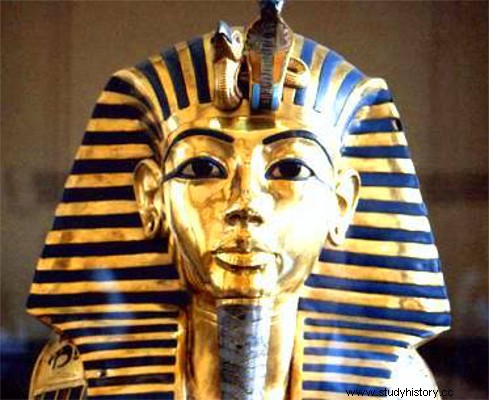
By Rainer Sousa
The legends and myths surrounding the pyramids attract many people and reinforce the mysterious side that surrounds ancient Egyptian culture. This mystery began to be instigated with the fever of excavations and archaeological expeditions that took over ancient Egyptian cities. In 1923, a group of researchers celebrated the discovery of the tomb of a pharaoh that was over 3000 years old.
This pharaoh was the legendary Tutankhamun, whose mummy was found alongside gold artifacts, bowls full of grain, and an Egyptian inscription promising that death would afflict anyone who disturbed the pharaoh's sleep. Even with its menacing tone, that and other warnings were not able to satisfy the greed of tomb raiders who violated the rest of several other mummies. Would the curse hit those who ignored the silent warning?
In the midst of so many legends, archaeologist Howard Carter decided to delve into the Valley of the Kings region in search of artifacts belonging to an Egyptian pharaoh. Arriving there around 1916, the team led by this researcher did not believe the warnings that said it was impossible to find any archaeological treasure among so many unfinished excavations. Six years later, Howard still couldn't find any clues to an unknown Egyptian king who had been buried in that region.
Obsessed with his hypotheses, he tried to organize one last dig in a region occupied by a few huts. After removing the rudimentary constructions from the site, the first excavations were presented with the encounter of a staircase. A few days later, Carter's team realized that it was an access to an obstructed passageway. That discovery spurred a more intense work that, soon after, unlocked a corridor that gave access to another door.
The door had a visibly broken seal and was later rebuilt. Such a clue diminishes Howard Carter's expectations of finding an intact archaeological treasure. After overcoming the hurdle of a final door, the archaeological team found a room crammed with exquisitely detailed artifacts and a gold-plated throne. In this room, he noticed the existence of another door where, through a crack, a new room was identified.
After these discoveries, Carter had the cunning to close the access to that place and throw a pile of rubble on the access road to the staircase. Months later, he raised more resources and experts to work on that big find. Returning to the first room, he removed and cataloged all his objects. This time, he opened the second room and there he came face to face with a huge funeral urn that took up almost the entire space of the place.
In almost three months of work, he removed three other smaller urns deposited inside the larger urn. Inside the last urn he discovered a heavy stone sarcophagus. After relying on a crane to remove the stone top, Howard Carter removed a linen veil that covered a beautiful death mask made of gold, glass and colored stones; and a coffin in the shape of a body. After that, two new layers of masks and coffins were taken from the inside of the sarcophagus.
After so many obstacles, the team of archeologists glimpsed the body of the pharaoh Tutankhamun burned and hardened by the resins used in his mummification process. The most valuable archaeological find at the time was achieved after years of dedication. However, the wealth of discovery has revived rumors of Tutankhamun's famous curse. Already the first time he discovered the staircase, Carter's canary was eaten by a snake, indicating the first bad omen.
At the time the tomb was discovered, businessman Lord Carnavon – backer of Carter's team – was one of the first to know about the sarcophagus. Soon after, the businessman had an infectious wound caused by the bite of a mosquito. The feverish state eventually led to his death within a few days. Before he died, he told his sister that Tutankhamun had summoned him. On the day he died, the businessman's dog suffered a massive heart attack.
The news of Lord Carnavon's death soon stirred the esoteric and superstitious about the curses of that pharaonic tomb. After the incident, Arthur Mace - a member of Carter's team - died suddenly in the same hotel where Carnavon spent his final days. Joel Woolf, owner of the first pictures of Tutankhamun, and Richard Bethell, Carter's secretary, also died under inexplicable conditions. In this same fateful coincidence, Carnavon's sister and wife were joined.
Over the six years after the discovery, thirty-five people linked to the discovery of Tutankhamun's mummy died under mysterious conditions. To combat supernatural legends and explanations, scientists hypothesized that some toxic substance or poisonous fungus was created at the time so that no one would desecrate that mortuary room. Others even claimed that the Egyptians already knew about atomic energy and would have deposited uranium in the tombs.
During the 20th century, the uproar caused by the curse of the tombs ended up losing its force through other calm archaeological discoveries. Even if the scientific explanations for the tragedies were plausible, the triggering of so many deaths cannot be satisfactorily explained as a simple eventuality. The unknown still covers this episode.
